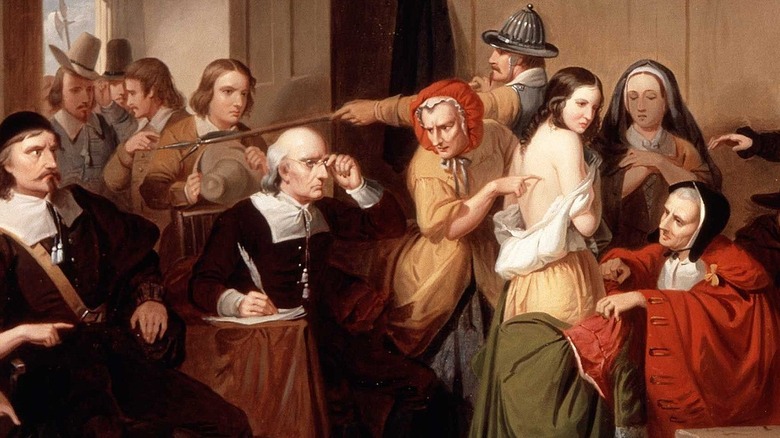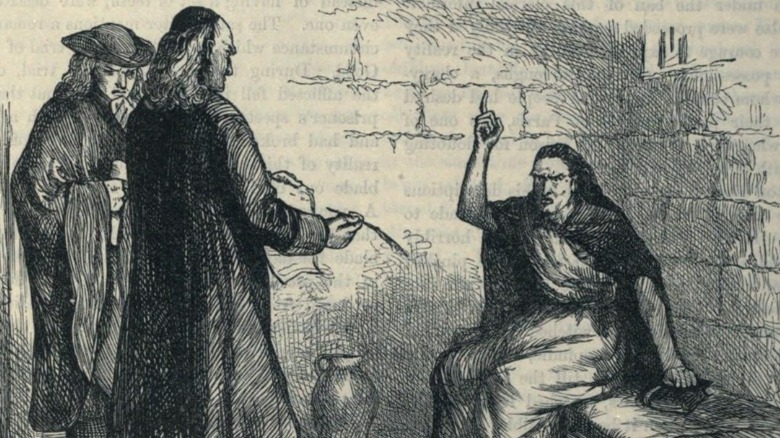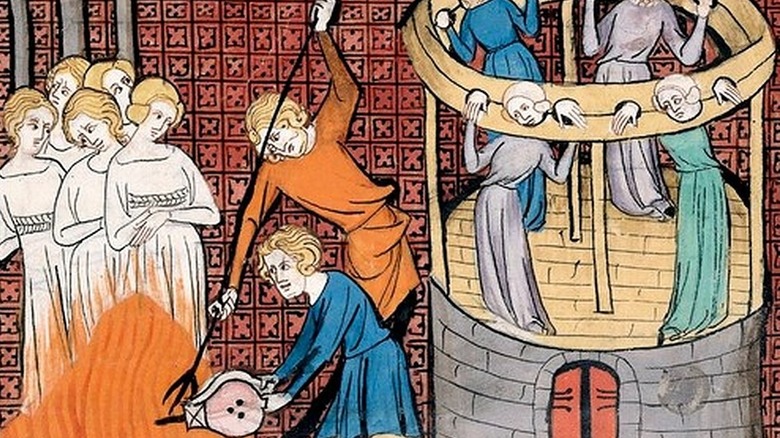Did Witch-Hunters Only Kill Women?
You might associate witch hunts with medieval Europe and the Inquisition, but the truth is that the fear of magic has been around for thousands of years. Witch-hunts are universal and appear throughout history in many cultures around the world. Both the Romans and the Greeks had laws against evil spells and incantations. Around 338 B.C. in ancient Greece, Theoris of Lemnos and her children were executed for using incantations (via People Pill).
The darkest times of witch hunting occurred during the Middle Ages, starting as early as the 1300s. The Inquisition — which was originally a Catholic Church office created to prosecute and punish heresy — eventually included witch hunting as part of their duties (via History).
It wasn't until the 1500s that witch hunting became commonplace in Europe, though. By then, there was an actual indictment witches could be charged with — maleficium (malevolent sorcery), according to Britannica. This could mean anything from worshiping the devil, or selling your soul to him, to riding through the air, to secret meetings, to murdering and eating children.
Most of those accused were women
According to Are We Europe, of the estimated 60,000 people burned at the stake during the European witch hunt, about 80% of them were women. While men were sometimes accused of witchcraft, the persecution of witches during the Middle Ages is now considered very clearly "genderized mass murder."
Even on paper, women were considered more likely to be "wicked" and stray from the Christian path. In the "Malleus maleficarum" ("The Hammer of Witches"), the 15th-century handbook published by the Catholic inquisition authorities, women are described as "by nature instruments of Satan — they are by nature carnal, a structural defect rooted in the original creation" (as quoted via University of Massachusetts Boston). It wasn't just the church, either — the majority of the people accused and convicted were tried in local courts after complaints from local peasants and townspeople.
Overall, about 20% of the victims of witch hunts were men, though these percentages varied among countries. For example, about 90% of those accused of witchcraft in Denmark, England, and Hungary were women, but it was a rather equal 50-50 in Finland and France (via University of Massachusetts Boston). Once accused, both sexes were just as likely to be found guilty.
During the 1600s Salem witch trials in Massachusetts, over 150 men, women and children were accused of witchcraft, and 19 were eventually hanged. Fourteen of the 19 victims were women (per History).
Actual witchcraft often wasn't even a factor
There are a lot of arguments regarding why women were the target of witch hunts. Some researchers believe it was a response to the behavior of women who didn't comply with what was expected of them (via Are We Europe).
In addition, research quoted by the University of Massachusetts Boston, a large number of women accused of witchcraft were older than 50 and living alone with no children. Whether they were widows or unmarried, these women were considered outside the patriarchal norms and more likely to be watched with suspicion. In Salem, while more prominent women were accused as the hysteria spread throughout the community, the first women arrested were poor or elderly (via History).
In a study published in the Journal of Social History, researchers point out that women were also more likely to be thought of as witches because of certain "witch-like behaviors." For example, at a time when women were expected to be meek and gentle, those who exhibited anger or engaged in conflict came across as suspicious.


